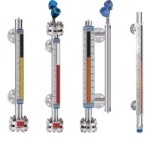Data acquisition, like an equipment acquisition, is the procurement of an asset. Data is an asset. It helps an operator evaluate process or business conditions and make decisions that impact the success of the organization. Let’s define data acquisition as the sampling of signals that represent a measurement of physical conditions and the conversion of those signals into a numeric form that can be processed by a computer. A data acquisition system will generally consist of sensors, transmitters, converters, processors, and other devices which perform specialized functions in gathering measurements and transforming them into a usable form.
 |
DAQ incorporating data acquisition, process
control, recording, display and networking
in a single compact unit
Courtesy Yokogawa Corp. |
Industrial process operators and stakeholders benefit from the collection and analysis of data by enhancing performance of valuable facets of the process or activity. Data acquisition, commonly known as DAQ, is widely employed in high stakes and sophisticated processes where there is a true need to know current conditions. A desire for increased profit drives the need for increased process output and efficiency. A desire to reduce risk of loss drives the need for reduced downtime and improved safety. Today, there are likely many useful applications for data acquisition that are not being tapped to their fullest potential. The modest cost and simplicity of putting a data acquisition system in place, compared to the benefits that can be derived from a useful analysis of the data for your operation or process, makes the installation of a data acquisition system a positive move for even small and unsophisticated operators in today’s market.
What we call DAQ today started in the 1960’s when computers became available to businesses of large scale and deep pockets. By the 1980’s, personal computers employed in the business environment could be outfitted with input cards that enabled the PC to read sensor data. Today, there is an immense array of measurement and data collection devices available, spanning the extremes of price points and technical capability. For a reasonable cost, you can measure and collect performance data on just about anything. You can get an impression of the simplicity, modularity, and compactness of a modern system with a quick review of
this product.
Data acquisition has an application anywhere an operator or stakeholder can benefit from knowing what is occurring within the bounds of their process or operation. Here is a partial list of the many physical conditions that can be measured in industrial settings:
 |
Other examples of industrial data acquisition equipment
Courtesy Yokogawa Corp. |
- Temperature
- Pressure
- Flow
- Force
- Switch Open or Closed
- Rotational or Linear Position
- Light Intensity
- Voltage
- Current
- Images
- Rotational Speed
Consider your industrial process or operation. Are there things you would like to know about it that you do not? Would you like to increase your insight into the workings of the process, how changes in one condition may impact another? Do you know what operating condition of each component of your process will produce the best outcomes? Is reducing maintenance, or heading off a failure condition before it occurs something you would like to have in your operation? Applying your creativity, ingenuity and technical knowledge, along with the help of a
product expert, will help you get the information you need to improve the outcomes from your industrial process or operation.








